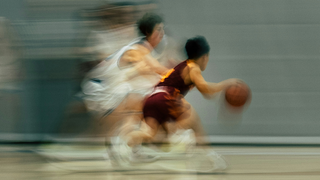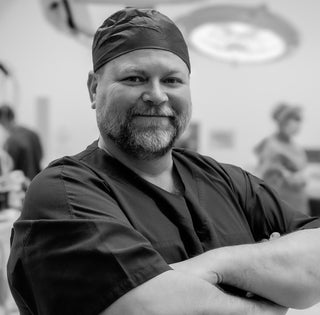ARTG listing means every claim is backed by science.
When you’re comparing a “sports cream,” the most useful part of the label is often the line people overlook: the AUST L number. That number means the product is a listed medicine in the Australian Register of Therapeutic Goods (ARTG).

Listed medicines must meet quality and safety standards and can only advertise product claims that are supported by clinical or scientific evidence. Furthermore, products must be manufactured in facilities that abide by the Australian Good Manufacturing Practice (AUS GMP). In reality, this matters more than clever marketing. It means products that can claim exactly what it’s proven to do. It also means customers get clear directions for use, written in a language for the public and not for lab benches. For RYGG and for our founder, orthopaedic surgeon Dr. Steve Andrews, this framework is non‑negotiable: product efficacy comes first, and advertising language must be honest. ARTG listing strips away marketing hype and highlights the true potency of our products.

Brands are built on choices. RYGG began with a clinical one from our founder: put product efficacy first. That is why our claims are grounded in the Australian Register of Therapeutic Goods (ARTG), and our products are certified by Informed Sport. The goal was never to dazzle; it was to deliver warmup and recovery tools that work in busy lives.
HEATE™ is used before activity to improve muscle performance, endurance and stamina.
KHULE™ is used after activity to assist recovery and relieve mild joint inflammation.

Dr. Steve Andrews brought surgical discipline to product design and Rygg’s advertising language. ARTG listing ensures claims are evidence‑anchored and consumer‑appropriate. Informed Sport certification adds every‑batch analysis and public verification. The result is a warm‑up performance cream and a cool-down recovery gel people can trust. Efficacy, not hype, is the organising principle at RYGG.
How do HEATE and KHULE work
The biological mechanisms that support performance and recovery
Used together, RYGG’s HEATE™ thermo performance cream and KHULE™ cryoactive recovery gel create your end‑to‑end performance and recovery regime. HEATE™ prepares muscle groups, supports increased blood circulation and provides anti‑inflammatory support. KHULE™ delivers fast‑acting cryotherapy‑like cooling to help calm the body and support post‑exercise recovery. Together, they provide a practical, science‑aligned protocol.
At a sensory level, these effects align with the behaviour of TRP (Transient Receptor Potential) ion channels in the skin and peripheral nerves. Menthol is a classic agonist of TRPM8 (Transient Receptor Potential Melastatin 8), a cold‑sensitive channel whose activation is associated with the perception of cooling. This cooling input is linked to downstream vasoconstrictive responses that can help manage post‑exercise intramuscular stress and transient joint swelling—think of KHULE as an ‘ice bath in a bottle’ used within the product’s directions. By contrast, warming actives such as methyl salicylate can activate TRPV1 (Transient Receptor Potential Vanilloid 1), a heat‑sensitive channel associated with warmth perception; TRPV1 activation is consistent with local vasodilatory responses that accompany a feeling of heat. In HEATE, that fast‑onset warmth helps prime primary movers and prepare joints for activity. Beyond sensation, methyl salicylate also provides anti‑inflammatory support, rounding out HEATE’s role as a pre‑sport ritual.
How to use HEATE and KHULE
HEATE — Application guidance
- Apply an ample squeeze of HEATE 15–30 minutes pre‑sport or exercise to large muscle groups that will be active.
- Target areas: quadriceps, hamstrings, calves, glutes, lower back, shoulders and forearms (for grip‑intensive tasks).
- Rub the cream into muscles until it is no longer visible, then wash hands immediately after.
KHULE — Application guidance
- Apply KHULE™ to trained muscles or areas of the body experiencing discomfort (for example, quadriceps and calves after running; shoulders and elbows after overhead work; knees and ankles after field sessions).
- Massage the gel into the area until absorbed. Wash hands afterwards and reapply as needed according to the label.
Sources & further reading
- Therapeutic Goods Administration. (n.d.). *How we regulate medicines*. https://www.tga.gov.au/products/medicines/how-we-regulate-medicines
- Therapeutic Goods Administration. (n.d.). *ARTG public search*. https://www.tga.gov.au/resources/artg
- Therapeutic Goods Administration. (n.d.). *Guidelines for assessing evidence for listed medicines*. https://www.tga.gov.au/resources/resource/guidance/guidelines-assessing-evidence-listed-medicines
- Therapeutic Goods Administration. (n.d.). *Advertising code—Mandatory statements and other information*. https://www.tga.gov.au/how-we-regulate/advertising/applying-advertising-code/mandatory-statements-and-other-information-required-advertising
- Informed Sport. (n.d.). *About the programme*. https://sport.wetestyoutrust.com/about
- Caterina, M. J., Schumacher, M. A., Tominaga, M., Rosen, T. A., Levine, J. D., & Julius, D. (1997). The capsaicin receptor: A heat-activated ion channel in the pain pathway. *Nature, 389*(6653), 816–824. https://doi.org/10.1038/39807
- McKemy, D. D., Neuhausser, W. M., & Julius, D. (2002). Identification of a cold receptor reveals a general role for TRP channels in thermosensation. *Nature, 416*(6876), 52–58. https://doi.org/10.1038/nature719
-
Peier, A. M., Moqrich, A., Hergarden, A. C., Reeve, A. J., Andersson, D. A., Story, G. M., ... & Patapoutian, A. (2002). A TRP channel that senses cold stimuli and menthol. *Cell, 108*(5), 705–715. https://doi.org/10.1016/S0092-8674(02)00652-9


